- Home
- Tom Clancy
Fighter Wing: A Guided Tour of an Air Force Combat Wing Page 16
Fighter Wing: A Guided Tour of an Air Force Combat Wing Read online
Page 16
Meanwhile, by the end of the 1970s, the B-52s weren’t getting any younger, and the SAC bomber force, with no follow-on replacement program, was facing obsolescence. As might be imagined, the SAC leadership lobbied hard to get the B-1 program back on track, with lots of support from Rockwell and those who believed in the continued importance and viability of the manned strategic bomber as part of the American nuclear triad (bombers, ICBM, and SLBMs). And in 1981 President Ronald Reagan announced the decision to build one hundred B-1B bombers—externally similar to the B-1A but radically redesigned in many respects. The production of those one hundred aircraft had been at the heart of his presidential campaign promise to rebuild the American military force to face down the Soviet Union in the 1980s. The first production bomber, christened the B-1B Lancer (after a famous pre-World War II interceptor), rolled out of Rockwell’s Palmdale, California, plant on September 4th, 1984, with the IOC of the first squadron being achieved on October 1st, 1986.
While it is officially designated the “Lancer,” the B-1B’s crews call it “the Bone.” Currently, B-1B squadrons are based at Dyess AFB, Texas; Ellsworth AFB, South Dakota; and McConnell AFB, Kansas. In addition, the six B-1Bs of Ellsworth’s 34th Bomb Squadron, now attached to the 366th Composite Wing, are hopefully scheduled to move to Mountain Home AFB in 1998, when expanded facilities are completed. Finally, two aircraft are permanently based at Edwards AFB, California, for continuing testing and evaluation of new B-1B weapons and systems. The B-1B force did not participate in Desert Storm, since it was then dedicated mainly to the nuclear deterrent role, crew training and software modifications for delivering conventional weapons were incomplete, and it was not really needed in the Gulf.
The place to explore a B-1B is the flight line of Ellsworth AFB near Rapid City, South Dakota, which is the home of the 28th Bombardment Wing, as well as the 34th Bombardment Squadron, which is assigned to the 366th Wing at Mountain Home AFB, Idaho. When you see a B-1B on the flight line at Ellsworth, the first thing you feel is speed. The Bone seems to be moving—and fast—just standing still on the ramp. Then there are the sensuous curves. As you get closer, the details that show the quality of the B-1B’s workmanship begin to show, and you begin to notice that the join lines between panels and access doors are almost impossible to see without knowing exactly where to look. Part of the reason for this has to do with the desire of the USAF and Rockwell to make the B-1B as small to enemy radars as possible. While technically not a stealth aircraft, it is considered a “low-observable” airframe, which does give it some penetration capabilities that even small fighters like the F-16 lack. The four afterburning F101 engines are mounted in underwing gondolas, with the two bomb bays located in the fuselage aft of the crew compartment. Except for a pattern of white markings around the in-flight refueling receptacle, B-1s are currently painted the same uniform dark gray as the F-111 and F-15E fleets, with small, low-visibility national markings. In peacetime, B-1 crews have applied some of the most creative nose artwork in the Air Force, but the rampaging animals and well-endowed young ladies would probably be painted over for combat missions, to reduce the visual signature. Moreover, the coming of women to the flight crews of USAF combat aircraft has imposed certain limits of taste upon such decorations, probably to the advantage of all concerned, but to the detriment of a highly cherished tradition of airmen around the world.
A cutaway drawing of the Rockweell International B-1B Lancer.
Jack Ryan Enterprises, Ltd., by Laura Alpher
The crew enters the Bone by climbing a retractable ladder built into the nose wheel well. An interesting feature here is the “alert start” button. Since SAC originally expected to launch under conditions of nuclear attack, a single big red “bang” button on the nose wheel strut can start all four engines and begin alignment of the inertial navigation system, so that the aircraft would be ready to roll as soon as the crew was strapped in. Now that the B-1Bs no longer operate in the nuclear deterrent role, nobody uses the panic start button anymore, and there’s time to work through the preflight check-list methodically. You have to be a bit careful going up the ladder, because the aisle is narrow and the headroom is limited. The flight crew consists of a pilot and copilot, who sit side by side in the front, with an offensive avionics operator (who fills the role of bombardier/navigator) and defensive avionics operator in a separate compartment behind them. The backseaters have small side windows, but their attention is dominated by large electronic consoles. The original B-1A design incorporated a complex crew “escape capsule”; the entire cockpit compartment would separate from the aircraft and deploy stabilizing fins and a parachute. But on the B-1B this was replaced by simpler, lighter, and more reliable ACES II ejection seats. Blow-out panels above each crew position are triggered by the ejection mechanism, which has a surprisingly good record for crew survival in emergencies. The in-flight refueling receptacle is built into the nose, just forward of the windshield; flight crews with B-52 experience find this a bit disorienting at first.
The controls, while not quite as advanced as those on the F-15E or F-16C, are quite easy to use, and very functional. You sit in the pilot’s seat, with the fighter-style control stick fitting in a nice, neutral position that is designed to reduce crew fatigue. While there is no HUD, the mission data is easily read from several MFDs located on the instrument panels. The throttle quadrant is located on a pedestal between the pilot and copilot positions, with other common controls like navigation and flight management systems being positioned there for easy access from either position. Engine, fuel, and other indicators are of the “strip” type, much like an old-style mercury thermometer. These visual readouts make it easy to see if an engine or some other system is operating within “green” (safe) parameters or in a “red” (danger) situation. There is also a small panel of enunciators, which show system status and warning lights for things like engine fires or low hydraulic pressure.
B-1s prefer to operate as lone wolves. Any escorting fighter that is not stealthy is likely to increase the risk of enemy detection. In low-level penetration missions, when the autopilot is coupled to the TFR mode of the APQ- 164, speed is life. At 500 feet/152.4 meters altitude, the B-1’s cruising speed is about 550 knots/1,006 kph., and at full afterburner it can be cranked up to just a hair over the speed of sound. Maximum takeoff weight is 477,000 lb./ 216,365 kg., with a maximum altitude of over 50,000 feet/15,240 meters.
No fighter in the world can overtake a B-1B operating at low altitudes. Over rough terrain, any fighter pilot who tries to stay on the B-1’s tail is likely to have a highly detrimental intersection with the ground. In addition to the APQ-164’s TFR radar mode, what makes this possible is a pair of small downward-slanted vanes on the nose, just forward of the cockpit. (From some angles, they make the plane look like a catfish.) Everything on an aircraft gets an acronym, and these little fins are part of the SMCS: Structural Mode Control System. Flying at low altitude means an aircraft is going to encounter turbulence even in good weather. This can make the aircraft dangerously hard to control, fatigues the crew, and causes flexing of the airframe that drastically shortens its service life. To reduce this problem, a set of accelerometers mounted in the aircraft sense the turbulence, and a computer rapidly moves the fins to compensate. The effect is to limit the vertical accelerations felt by the crew to no more than three Gs.
Just behind the pilot’s position is a space, about the size of a large packing carton, which pretends to be a toilet. This is not of the flush variety, but simply a canned chemical “pack” which allows a crew of four to function for about twenty hours. For the longer “Global Power/Global Reach” missions, which can last more than thirty hours, a second toilet pack is kept in the stowage compartment just behind the copilot’s position. Also kept here are things like food, water, coffee, personal equipment, engine inlet covers, and anything else that can be crammed into the space. For crews used to the relative roominess of the old B-52s, the B-1B can be somewhat confining and spart
an. In fact, where the B-52 had crew rest bunks, B-1 crews tend to just lay a couple of engine covers in the aisle between the front and rear compartments and snatch catnaps as time and events allow. Mission endurance is, in fact, virtually unlimited. With aerial refueling, B-1s have flown completely around the Earth in thirty-hour marathons.
In the after part of the crew compartment, on either side of the crew entry hatch, are the positions for the offensive avionics operator (bombardier/ navigator) and defensive avionics operator (electronic warfare officer). Sitting in their own ejection seats, they each face a large vertical panel which controls the various sensor and electronic warfare systems. The electronic systems of the B-1B are tied together by a quadruple-redundant MIL-STD- 1553 data bus. The health and status of all systems are continuously monitored and recorded by a central integrated test system, which greatly simplifies troubleshooting for ground-based mechanics. There are a number of IBM AP-101F computers, based on the 1960s-vintage computers, installed in the B-52G; two are dedicated to terrain following, one is for navigation, one for controls and displays, one for weapons control, and one for backup. By modern standards these computers are pretty feeble—they share a total mass memory unit with only 512K of magnetic core memory (less than the cheapest portable computer you could buy today); but these systems are hardened against the electromagnetic effects of a nearby nuclear explosion. Just try that trick with your desktop PC or Macintosh. Continuing upgrades of the computers and software are likely, if government policies do not cripple the highly specialized radiation-hardened chip industry.
A Rockwell International B-1B Lancer bomber assigned to the 366th Wing’s 34th Bombardment Squadron on the ramp of Ellsworth AFB. John D. Gresham
On the right is the position for the offensive avionics operator, who controls the radar, navigational, and weapons-delivery systems of the B-1B. The nose-mounted Westinghouse APQ-164 radar of the Bone is derived from the APG-66 used on the F-16A. Actually composed of two radars (one to control the terrain-following autopilot, the other to provide an attack sensor) stacked one on top of the other, the APQ-164 has matured a great deal since coming into service ten years ago. Updated software provides for up to thirteen different radar modes to provide ground mapping, navigation, weapons targeting, and all-weather terrain following. The APQ-164 can also operate in an SAR mode, to take the same kind of target-mapping photos that can be obtained from the APG-68 on the F-16C, and the APG-70 on the F-15E. Recent software improvements in SAR mapping radar mode are dramatic. “You could pick out fence posts before; now you can practically see the wire,” said one Rockwell executive in a recent trade journal interview, and the crews from the 34th BS confirmed this claim. One of them told us that with the attack system he could resolve the structural legs of high-tension power towers, and deliver 50 lb./227.1kg. iron bombs between the legs. And that’s the whole point of keeping the big bombers—their ability to deliver vast amounts of ordnance with a single sortie.
One thing that B-1B crews have desperately needed is an improved navigation system, preferably one based around the NAVSTAR GPS satellite constellation, which was recently completed. Composed of 24 satellites, it provides super-accurate navigation and timing information to users equipped with relatively cheap, small, and lightweight GPS receivers. Unfortunately, unlike fighters like the F-16C, which were among the first to get the Rockwell Collins MAGR, the B-1B bomber force has languished without this badly needed black box. While there are future plans to add the MAGR to the Bone’s avionics fit, the crews decided to take matters into their own hands, and thus are the roots of a story. Several years ago, when faced with exactly the same problem, the crews of U-2 reconnaissance aircraft, whose navigation must by nature be extremely accurate, began to get impatient for their own GPS upgrade, and started to look at some commercial options. This led them to our old friends at Trimble Navigation, the makers of the famous SLGR GPS receiver which was used extensively during Desert Storm. (See my previous book Armored Cav for a description of the SLGR.) Makers of a whole line of military and commercial GPS receivers, they had taken the basic technology elements of the SLGR, which was packaged into a case about the size of a car stereo, and repackaged it into a smaller, lighter, and cheaper form factor called the Scout-M. Looking for all the world like an olive-drab phaser from the TV series Star Trek: The Next Generation, the Scout-M provided similar functionality to the SLGR, at less than one fifth the weight, volume, and cost. The little green machine has proven quite popular with military personnel and sportsmen around the world, despite the lack of a more accurate PY-code military model, and it is here that we start our story. Trimble’s aviation version of the Scout-M contained an additional read-only-memory (ROM) chip, which stores additional flight-related data. Known as the Flightmate Pro, its special ROM is loaded with some 12,000 positions for airfields, airbases, and other important navigational landmarks of concern to aviators. Originally designed to provide private pilots with an inexpensive way of taking advantage of the benefits of the GPS system, it is in fact a highly sophisticated self-contained navigation system which can be had for less than $1,000, and then clipped to the control wheel of your Cessna, Piper, or Beechcraft. Packaged in an attractive gray case, it is equipped with a socket for an external antenna, as well as an interface connector to connect it to a personal computer for route and flight planning. First sold in 1993, it has sold thousands of units to pilots worldwide, and has become something of a bestseller in the world of general aviation.
The Trimble Flightmate, a hand-held GPS receiver being used by USAF crews, including those who fly the B-1B Lancer. Trimble Navigation
Now enter the U-2 crews of the 9th Reconnaissance Wing, who, as we previously mentioned, were desperately in need of a GPS-type navigational system. Soon after the Flightmate Pro’s introduction, the U-2 pilots pressured their procurement office to make a request for a commercial buy of the little GPS receivers. To keep the Powers-That-Be from figuring out just what they were doing, they claimed that the Flightmates were going to be used as a search-and-rescue (SAR) aid, to help SAR forces to find them, and in fact, they are quite useful for that task. If it had been bought as a piece of navigation gear, it would have been treated as an avionic system by the folks who manage the procurement programs, and taken years to get approval. As a commercial buy, though, it could be done in a matter of days. Almost immediately, the U-2 pilots began to strap them to their kneeboards, and use them without modifications, since the GPS satellite signals could be easily read by the receiver right through the aircraft’s bubble canopy. The U-2 drivers loved it, and have kept their Flightmate Pros well after their aircraft have finally received their scheduled MAGR GPS receiver installation. Word of the nifty little GPS receiver has gotten around, and numerous other units have made “commercial orders” of Flightmate Pros as a “SAR aid.” Many of these have come from the B-1B community, including the 34th Bombardment Squadron (BS) of the 366th Wing. The 34th BS maintenance technicians have rigged a GPS antenna on top of the fuselage, and then run antenna connections to each of the crew positions, so that each one can plug in their own personal Flightmate Pro to assist them in their tasks. For the pilot and copilot, this usually means assisting them with route planning, execution, and timing. For the folks in the rear seats, it can be used to assist in planning weapons deliveries and avoiding the envelopes of threat systems like SAM sites. The young B-1 crews are always finding new ways to use their laptop computers to program the Flightmate Pro, and I have to imagine that they will continue to in the future. Even though it is only accurate to about 100 yards-meters of ground truth, this is usually accurate enough to make a considerable difference in a crew’s performance of a particular task. And while the Flightmate may lack some of the accuracy of the PY-code MAGR (which is accurate to within about 10 yards/meters), it is a vast improvement over their existing systems, and may have to do until the coming B-1B GPS installation in the late 1990s. In any case, it’s another example of how this fast-moving technolo
gy can do almost impossible things for absurdly low prices, and you can even buy one for yourself to boot!
A Conventional Munitions Module (CMM) is loaded into the forward bomb bay of a B-1B Lancer bomber. The B-1B can carry up to three CMMs, each of which can be loaded with up to twenty-six 500 lb/277.3 kg Mk 82 general-purpose bombs. John D. Gresham
On the left side of the compartment is the position for the defensive avionics operator, whose job it is to manage and operate the defensive countermeasure systems of the Lancer. These include a variety of different sensor, jammer, and decoy systems. But the B-1B’s best defense lies in its ability to avoid being seen and caught. As a result, the B-1’s designers dispensed with the traditional tail gun, relying on elaborate electronic countermeasures for protection and the aircraft’s inherent low radar cross section (RCS).
All of the offensive weapons are carried internally—and I mean a lot of weapons. The maximum ordnance load is 125,000 lb./56,700 kg.—twice the capacity of a B-52. But a more typical combat load would be about half that much. There are two bomb bays: The forward bay is twice the length of the aft bay, and has a movable bulkhead that allows the fitting of one or two optional extra fuel tanks in place of bombs. Up to eighty-four Mk 82 500-pound bombs can be carried in special dispensers called conventional munitions modules (CMMs) that can drop the entire bomb load in just two seconds—about 3,000 feet/914.4 meters of horizontal flight. This is the equivalent of the maximum combat load of seven F-15Es delivered by just one aircraft! Back in the Cold War when the Lancer flew in the strategic deterrent role, it carried up to three removable eight-round rotary launchers, loaded with nuclear gravity bombs or AGM-69 Short Range Attack Missiles. The launchers have been retained and can be fitted with adapters for up to eight Mk 84 2,000-pound bombs, BLU-109, or other weapons, including the AGM-86 ALCM-C air-launched cruise missile with a conventional warhead. (See Chapter 4 for a fuller description of these.) Strangely, because the B-1B is no longer being counted as a nuclear-capable platform under the SALT and START treaties, the entire force is now unable to drop nuclear weapons.

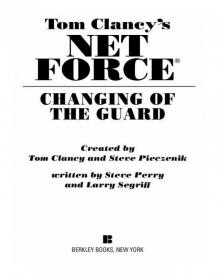 Changing of the Guard
Changing of the Guard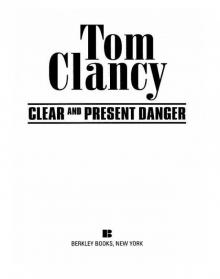 Clear and Present Danger
Clear and Present Danger Hounds of Rome
Hounds of Rome Breaking Point
Breaking Point Tom Clancy's Jack Ryan Books 7-12
Tom Clancy's Jack Ryan Books 7-12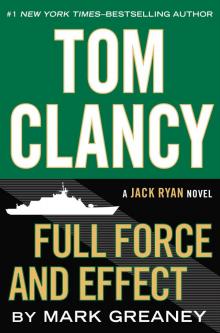 Full Force and Effect
Full Force and Effect The Archimedes Effect
The Archimedes Effect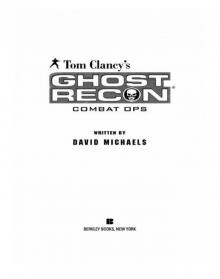 Combat Ops
Combat Ops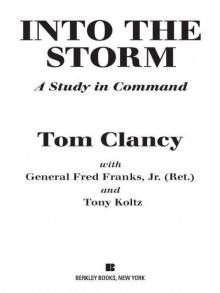 Into the Storm: On the Ground in Iraq
Into the Storm: On the Ground in Iraq Under Fire
Under Fire Point of Impact
Point of Impact Red Rabbit
Red Rabbit Rainbow Six
Rainbow Six The Hunt for Red October
The Hunt for Red October The Teeth of the Tiger
The Teeth of the Tiger Conviction (2009)
Conviction (2009)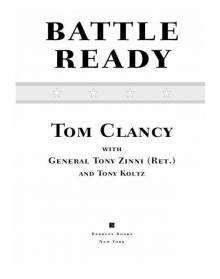 Battle Ready
Battle Ready Patriot Games
Patriot Games The Sum of All Fears
The Sum of All Fears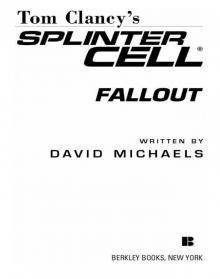 Fallout (2007)
Fallout (2007) Red Storm Rising
Red Storm Rising The Cardinal of the Kremlin
The Cardinal of the Kremlin Executive Orders
Executive Orders Lincoln, the unknown
Lincoln, the unknown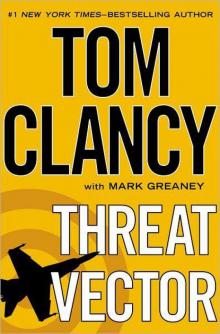 Threat Vector
Threat Vector The Hunted
The Hunted Shadow Warriors: Inside the Special Forces
Shadow Warriors: Inside the Special Forces End Game
End Game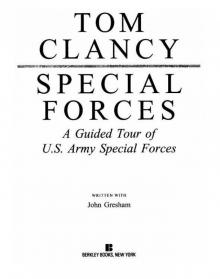 Special Forces: A Guided Tour of U.S. Army Special Forces
Special Forces: A Guided Tour of U.S. Army Special Forces Locked On
Locked On Line of Sight
Line of Sight Tom Clancy Enemy Contact - Mike Maden
Tom Clancy Enemy Contact - Mike Maden Fighter Wing: A Guided Tour of an Air Force Combat Wing
Fighter Wing: A Guided Tour of an Air Force Combat Wing Springboard
Springboard Line of Sight - Mike Maden
Line of Sight - Mike Maden EndWar
EndWar Dead or Alive
Dead or Alive Tom Clancy Support and Defend
Tom Clancy Support and Defend Checkmate
Checkmate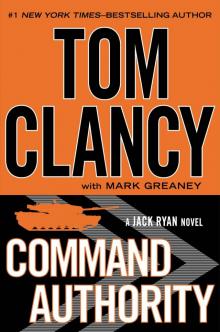 Command Authority
Command Authority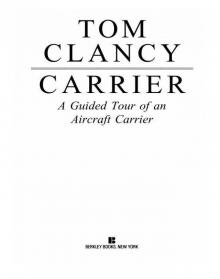 Carrier: A Guided Tour of an Aircraft Carrier
Carrier: A Guided Tour of an Aircraft Carrier Blacklist Aftermath
Blacklist Aftermath Marine: A Guided Tour of a Marine Expeditionary Unit
Marine: A Guided Tour of a Marine Expeditionary Unit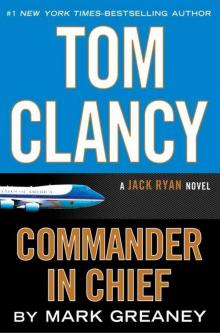 Commander-In-Chief
Commander-In-Chief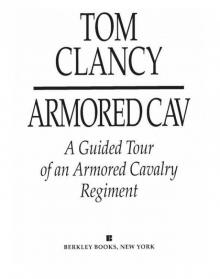 Armored Cav: A Guided Tour of an Armored Cavalry Regiment
Armored Cav: A Guided Tour of an Armored Cavalry Regiment Tom Clancy's Jack Ryan Books 1-6
Tom Clancy's Jack Ryan Books 1-6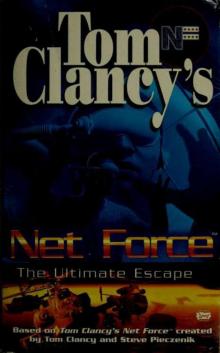 The Ultimate Escape
The Ultimate Escape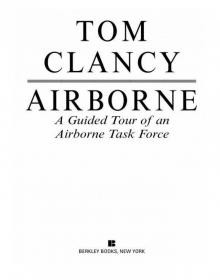 Airborne: A Guided Tour of an Airborne Task Force
Airborne: A Guided Tour of an Airborne Task Force Debt of Honor
Debt of Honor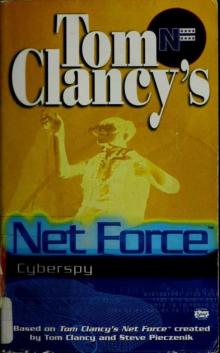 Cyberspy
Cyberspy Point of Contact
Point of Contact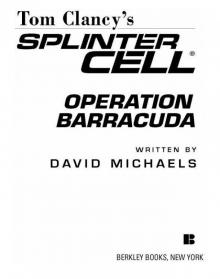 Operation Barracuda (2005)
Operation Barracuda (2005)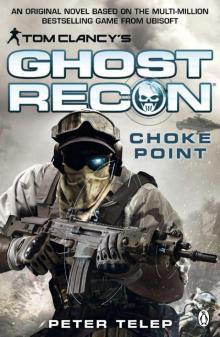 Choke Point
Choke Point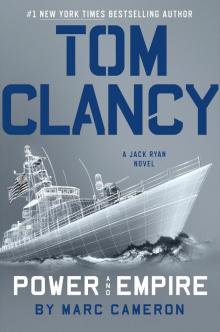 Power and Empire
Power and Empire Every Man a Tiger: The Gulf War Air Campaign
Every Man a Tiger: The Gulf War Air Campaign Endgame (1998)
Endgame (1998)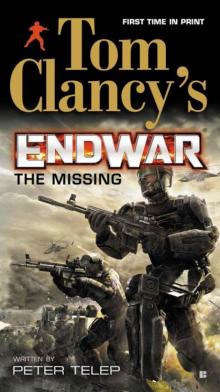 EndWar: The Missing
EndWar: The Missing Splinter Cell (2004)
Splinter Cell (2004) The Great Race
The Great Race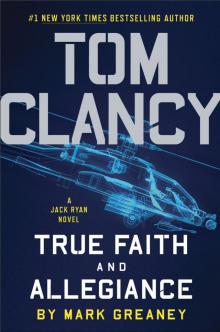 True Faith and Allegiance
True Faith and Allegiance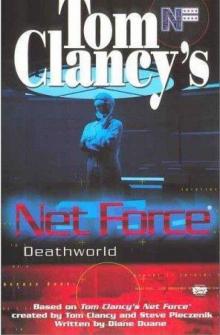 Deathworld
Deathworld Ghost Recon (2008)
Ghost Recon (2008)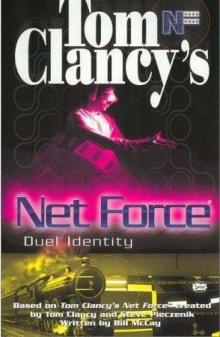 Duel Identity
Duel Identity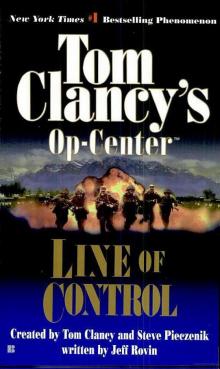 Line of Control o-8
Line of Control o-8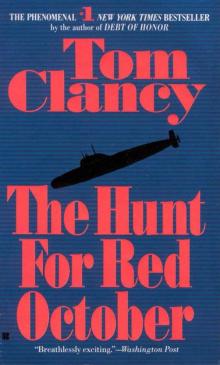 The Hunt for Red October jr-3
The Hunt for Red October jr-3 Hidden Agendas nf-2
Hidden Agendas nf-2 Acts of War oc-4
Acts of War oc-4 Ruthless.Com pp-2
Ruthless.Com pp-2 Night Moves
Night Moves The Hounds of Rome - Mystery of a Fugitive Priest
The Hounds of Rome - Mystery of a Fugitive Priest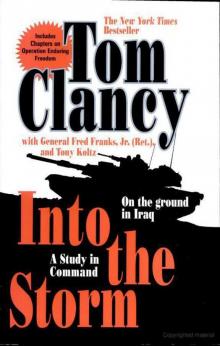 Into the Storm: On the Ground in Iraq sic-1
Into the Storm: On the Ground in Iraq sic-1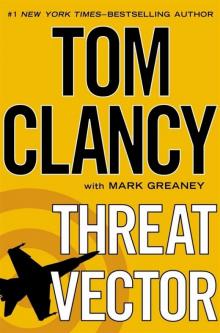 Threat Vector jrj-4
Threat Vector jrj-4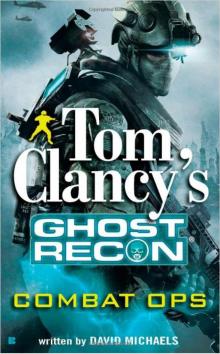 Combat Ops gr-2
Combat Ops gr-2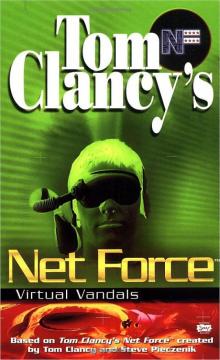 Virtual Vandals nfe-1
Virtual Vandals nfe-1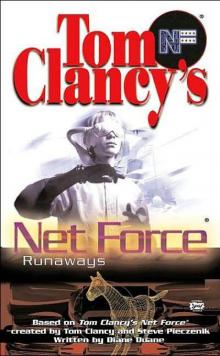 Runaways nfe-16
Runaways nfe-16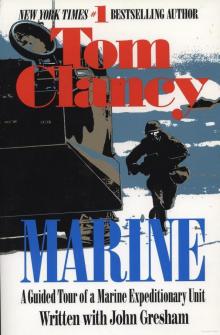 Marine: A Guided Tour of a Marine Expeditionary Unit tcml-4
Marine: A Guided Tour of a Marine Expeditionary Unit tcml-4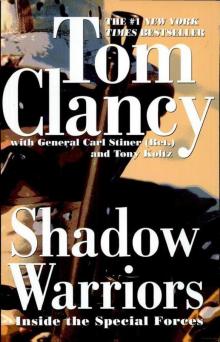 Shadow Warriors: Inside the Special Forces sic-3
Shadow Warriors: Inside the Special Forces sic-3 Jack Ryan Books 1-6
Jack Ryan Books 1-6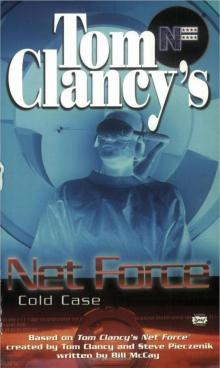 Cold Case nfe-15
Cold Case nfe-15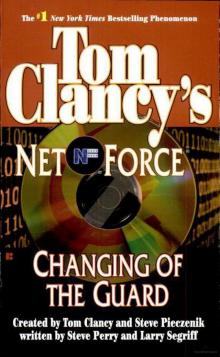 Changing of the Guard nf-8
Changing of the Guard nf-8 Splinter Cell sc-1
Splinter Cell sc-1 Battle Ready sic-4
Battle Ready sic-4 The Bear and the Dragon jrao-11
The Bear and the Dragon jrao-11 Fighter Wing: A Guided Tour of an Air Force Combat Wing tcml-3
Fighter Wing: A Guided Tour of an Air Force Combat Wing tcml-3 Patriot Games jr-1
Patriot Games jr-1 Jack Ryan Books 7-12
Jack Ryan Books 7-12 Mission of Honor o-9
Mission of Honor o-9 Private Lives nfe-9
Private Lives nfe-9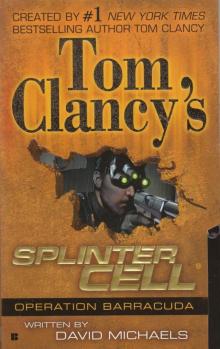 Operation Barracuda sc-2
Operation Barracuda sc-2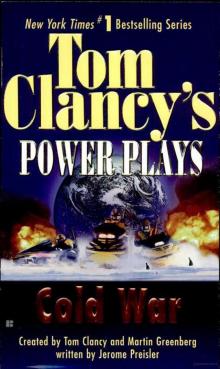 Cold War pp-5
Cold War pp-5 Point of Impact nf-5
Point of Impact nf-5 Red Rabbit jr-9
Red Rabbit jr-9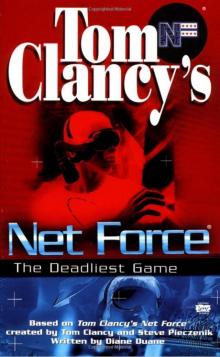 The Deadliest Game nfe-2
The Deadliest Game nfe-2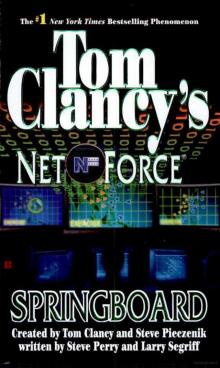 Springboard nf-9
Springboard nf-9 Safe House nfe-10
Safe House nfe-10 EndWar e-1
EndWar e-1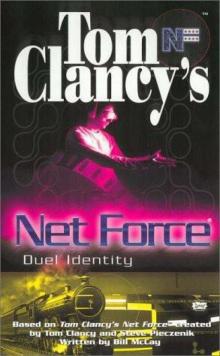 Duel Identity nfe-12
Duel Identity nfe-12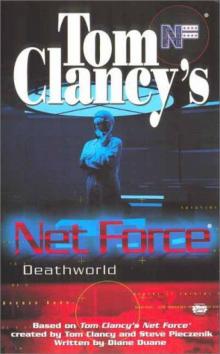 Deathworld nfe-13
Deathworld nfe-13 Politika pp-1
Politika pp-1 Rainbow Six jr-9
Rainbow Six jr-9 Tom Clancy's Power Plays 1 - 4
Tom Clancy's Power Plays 1 - 4 Endgame sc-6
Endgame sc-6 Executive Orders jr-7
Executive Orders jr-7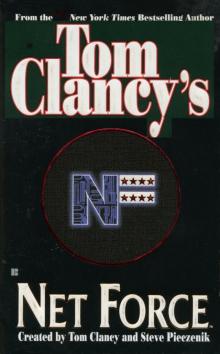 Net Force nf-1
Net Force nf-1 Call to Treason o-11
Call to Treason o-11 Locked On jrj-3
Locked On jrj-3 Against All Enemies
Against All Enemies The Sum of All Fears jr-7
The Sum of All Fears jr-7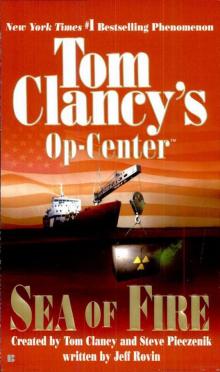 Sea of Fire o-10
Sea of Fire o-10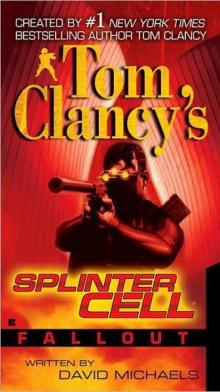 Fallout sc-4
Fallout sc-4 Balance of Power o-5
Balance of Power o-5 Shadow Watch pp-3
Shadow Watch pp-3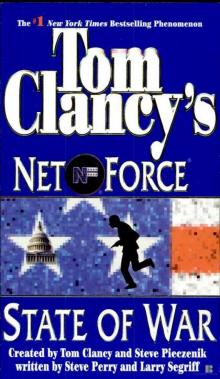 State of War nf-7
State of War nf-7 Wild Card pp-8
Wild Card pp-8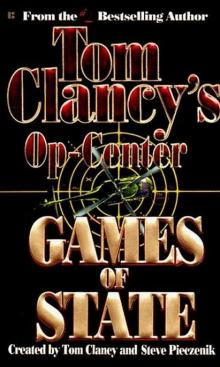 Games of State o-3
Games of State o-3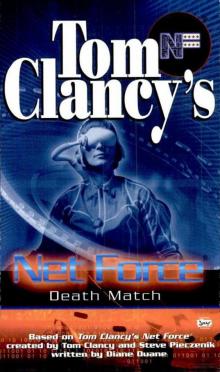 Death Match nfe-18
Death Match nfe-18 Against All Enemies mm-1
Against All Enemies mm-1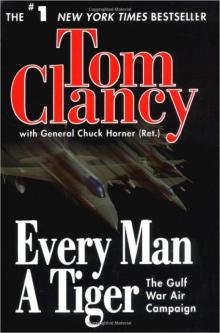 Every Man a Tiger: The Gulf War Air Campaign sic-2
Every Man a Tiger: The Gulf War Air Campaign sic-2 Cybernation nf-6
Cybernation nf-6 Support and Defend
Support and Defend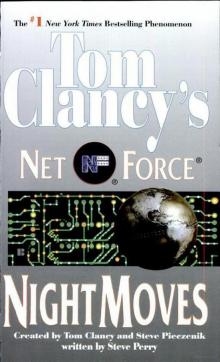 Night Moves nf-3
Night Moves nf-3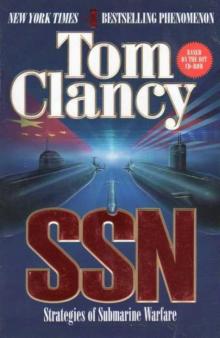 SSN
SSN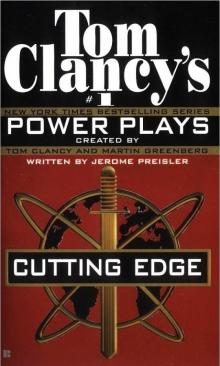 Cutting Edge pp-6
Cutting Edge pp-6 The Cardinal of the Kremlin jrao-5
The Cardinal of the Kremlin jrao-5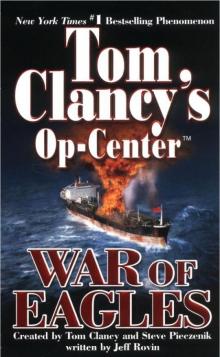 War of Eagles o-12
War of Eagles o-12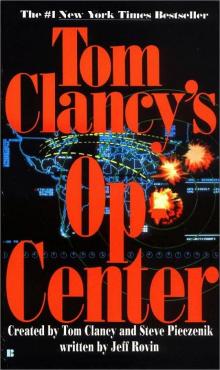 Op-Center o-1
Op-Center o-1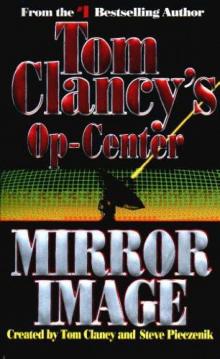 Mirror Image o-2
Mirror Image o-2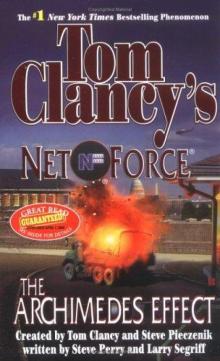 The Archimedes Effect nf-10
The Archimedes Effect nf-10 Teeth of the Tiger jrj-1
Teeth of the Tiger jrj-1 Bio-Strike pp-4
Bio-Strike pp-4 State of Siege o-6
State of Siege o-6 Debt of Honor jr-6
Debt of Honor jr-6 Zero Hour pp-7
Zero Hour pp-7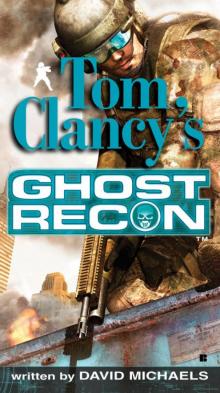 Ghost Recon gr-1
Ghost Recon gr-1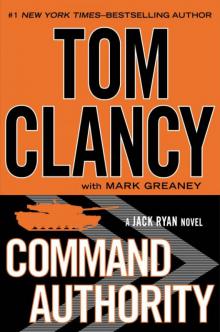 Command Authority jr-10
Command Authority jr-10 Tom Clancy's Power Plays 5 - 8
Tom Clancy's Power Plays 5 - 8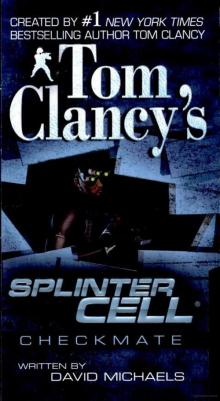 Checkmate sc-3
Checkmate sc-3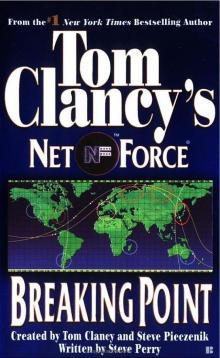 Breaking Point nf-4
Breaking Point nf-4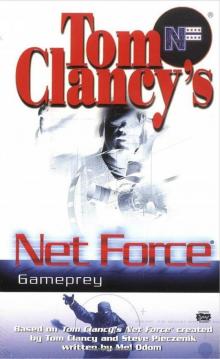 Gameprey nfe-11
Gameprey nfe-11 The Hunted e-2
The Hunted e-2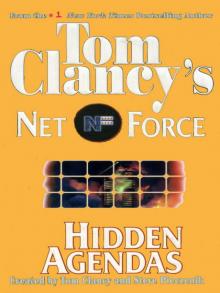 Hidden Agendas
Hidden Agendas Divide and Conquer o-7
Divide and Conquer o-7